The Aztecs were a fierce warrior race who believed that their gods would die if they did not offer human sacrifices. With this belief, they could not stop engaging in warfare, wherein they captured several enemies to offer to their gods. By the time the Spanish conquistadors came, the Aztecs were already powerfully dominant in the region. They managed to expand their empire by winning countless battles.
As the Aztecs engaged in battles often, they had to rely on their weapons and military tactics. They used a mix of melee and ranged weapons, from blowguns with poisoned darts, long spears, slingshots, bladed clubs, axes, and daggers. Their archers and experts in slingshots could launch rains of arrows and sharp stones, and their powerful clubs could slash, stun, and decapitate. Elite warriors had body armor, shields, and wooden helmets. Overall, they won their battles through their sheer force and strength.
Atlatl

The Aztecs used a spear launcher they called the atlatl. However, only a privileged few were allowed to use it. Due to the different ranks in the warrior class, only those warriors belonging to the highest ranks could use the atlatl, since they stood on the front lines. Aside from the atlatl, the elite warriors also carried several 5.9-foot long spears (tlacochtli) with obsidian, copper, or fish bone tips. The atlatl could also launch arrows and darts.
The spear-thrower worked like an extension of the warrior’s arm. It comprised a shaft with a cup holder at one end where the spear shaft could rest. The extension allowed the warrior to throw a spear over a great distance.
Tlahhuitolli, Micomitl, Yaomitl

Aztec archers (tequihua) carried five-foot-long war bows they called tlahhuitolli, made from the wood of the tepozan tree, with strings made from animal tendon. The warriors’ arrows were tipped with chert, flint, or obsidian and balanced with duck or turkey feathers. They carried their arrows in a quiver (micomitl), which could hold around 20 arrows (yaomitl). The length of the bow allowed the archers to rain arrows on the enemies from a distance, ensuring that they could weaken them before they closed the gap and engaged in hand-to-hand combat.
Tematlatl
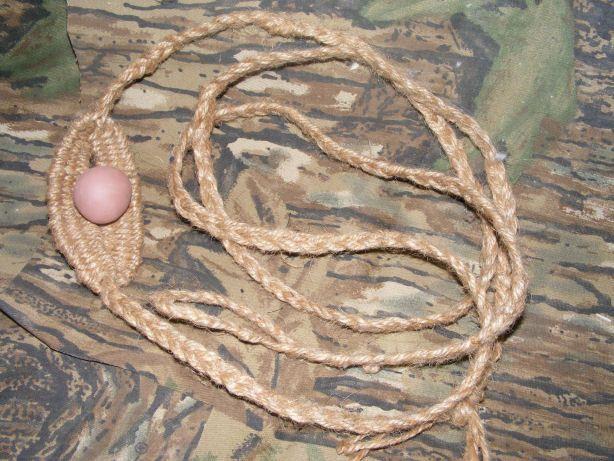
The Aztecs used a sling called tematlatl to throw a hail of rocks and stones on their enemies from mid to long distances. They used maguey fiber to create the sling. Their “bullets” were oval-shaped rocks, or sharp rocks the auxiliary soldiers picked along the way. Moreover, they molded clay into small balls filled with pebbles or obsidian flakes as projectiles. The Aztec warriors excelled in using the sling, as they could fling the hail of stones furiously, wounding Spanish soldiers who wore metal armor. The Aztec soldiers could even break enemy lines with their stone showers.
Tlacalhuazcuahuitl
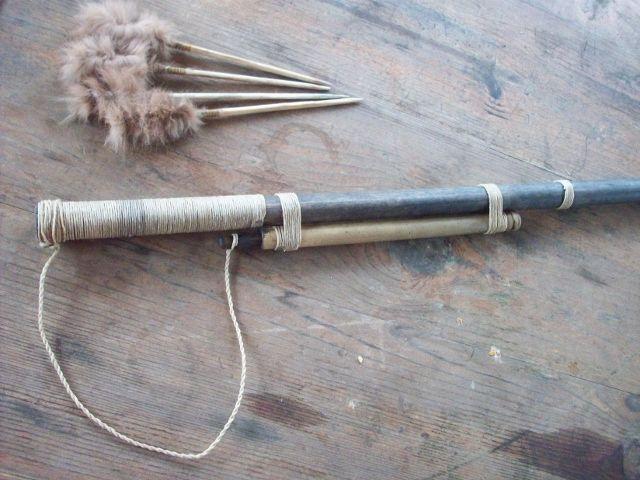
Although Aztecs typically used blowguns and poisoned darts for hunting, they had warriors trained in ambush. These warriors usually bring their tlacalhuazcuahuitl or blowgun and darts whose tips they spiked with the secretions of poisonous tree frogs. They typically made the blowgun from hollow reed, while the poisoned darts were fashioned from sharpened wood balanced with cotton. They often used their blowguns for raids and stealth attacks.
Macuahuitl

Aztec warriors used several types of clubs, one of their most dangerous weapons. Most elite Aztec warriors used the macuahuitl, a wooden club or broadsword. Razor-sharp obsidian blades lined the edges of the macuahuitl, which can sever limbs. Obsidian can produce an edge sharper than razor blades of high quality. According to the Europeans who invaded the Aztecs, the macuahuitl was the most fearsome. For the Aztecs, it was their weapon of choice for close combat action, as they could slice, cut, and bestow significant damage to their enemies. A blow from this club could decapitate a horse, according to reports.
The macuahuitl had a loop at the handle’s base, which the warriors used to fasten the club to their arm or wrist with a piece of fabric. The club came in different sizes, too. The longer version was about five feet long, which the warriors wielded with two hands.
Huitzauhqui
A huitzauhqui was a baseball bat-type club supposed to represent Huitzilopochtli, an Aztec god. Some of these wooden clubs had flint or obsidian cutting elements embedded on their two sides and were used for melee attacks. Aztec warriors used the huitzauhqui in close quarters. They were usually larger than the macuahuitl.
Tepoztopilli
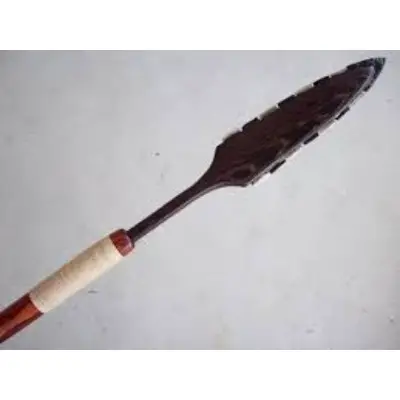
The Aztecs also had long spears with obsidian tips, which they called tepoztopilli. Like their clubs, the tepoztopilli were made from one piece of wood. They were about three to seven feet long, with shovel-shaped heads, which were about the size of two hands, roughly around 14 to 16 inches. Sharp obsidian blades were cemented in place with plant resin or bitumen along the edge of the head. Because of their length, historians believed that soldiers on the front line used them. The length would allow them to extend the spears forward to jab, slice, and topple their foes.
Itztopilli
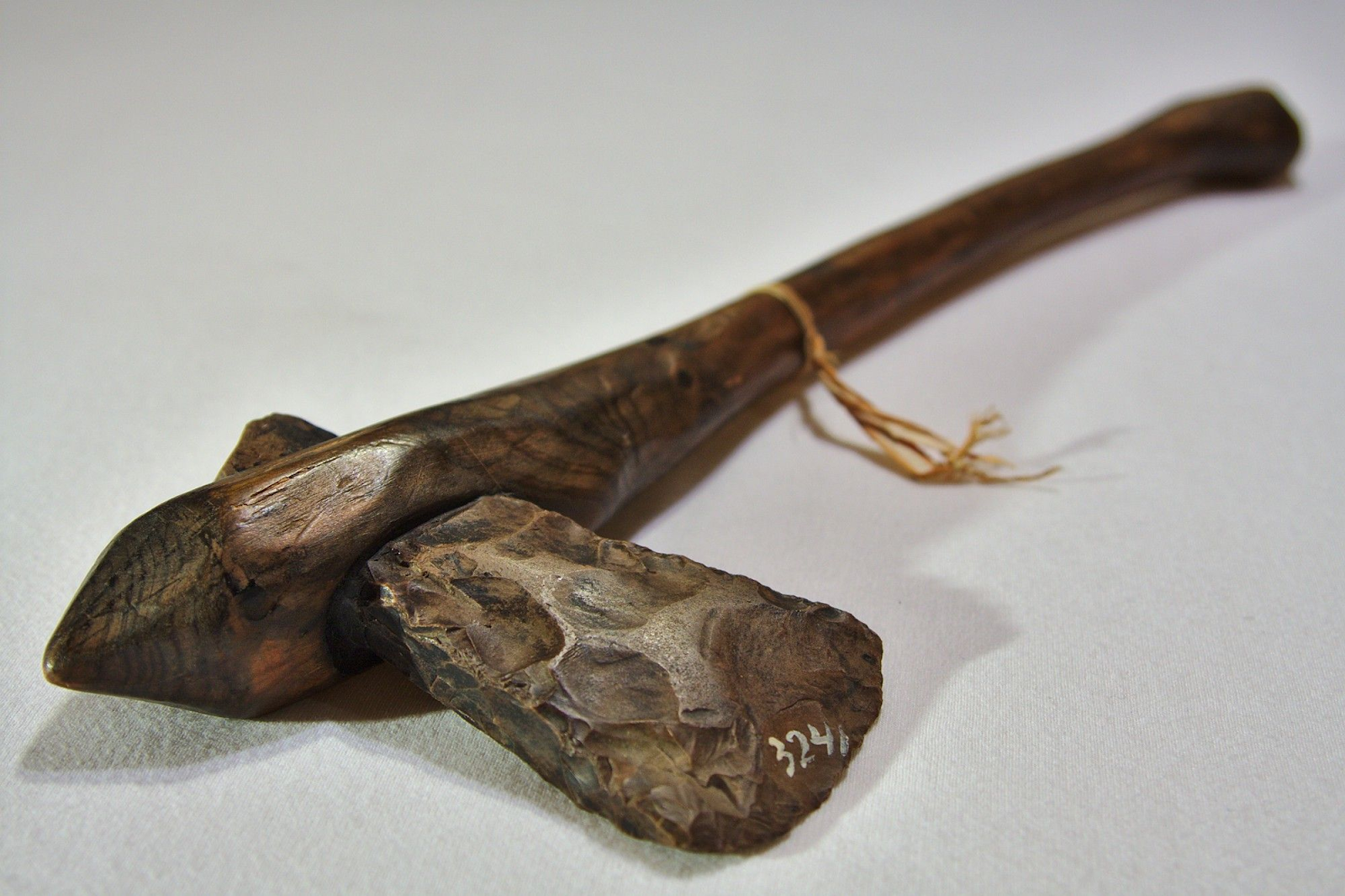
Aside from their clubs, bow and arrows, spears, and darts, Aztecs also used axes or itztopilli. These axes, shaped like tomahawks, have wooden handles. The head of the ax could be either stone or copper. One end of the head was blunt while they sharpened the other end. Historians thought that the Aztecs used them later in their life because they were not commonplace.
Tecpatl
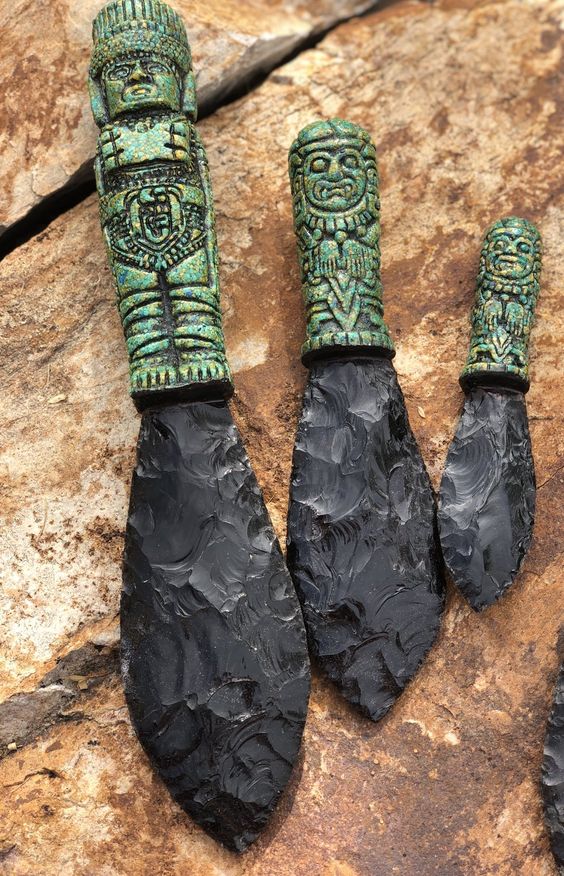
The tecpatl was a dagger shaped from obsidian or flint, which many soldiers carried with them. The daggers often had double-sided blades, and their handles were made from elaborately carved wooden or stone handles. The tecpatl was a mid-sized dagger, with a total length of about seven to nine inches. Aztec warriors used the tecpatl for hand-to-hand combat, but Aztec warrior priests often used the dagger for their sacrificial ceremonies.
Tlahuiztli

The tlahuiztli is the uniquely decorated suit worn by the prestigious warriors of the Aztec warrior groups. It can identify the warriors based on their rank, alliance, social status, and battle achievements. The tlahuiztli is a bodysuit with a back opening that covers the entire torso and the arms and legs of a warrior. It adds a layer of protection to the wearer. The garment used a combination of cotton, leather, and animal hide. It enhanced the body armor of the warrior. These particular suits differ in color and decoration, making it easier to identify the warriors on the battlefield, aside from their emblems or pamitl. Only a few were made from animal skin.
Ichcahuipilli
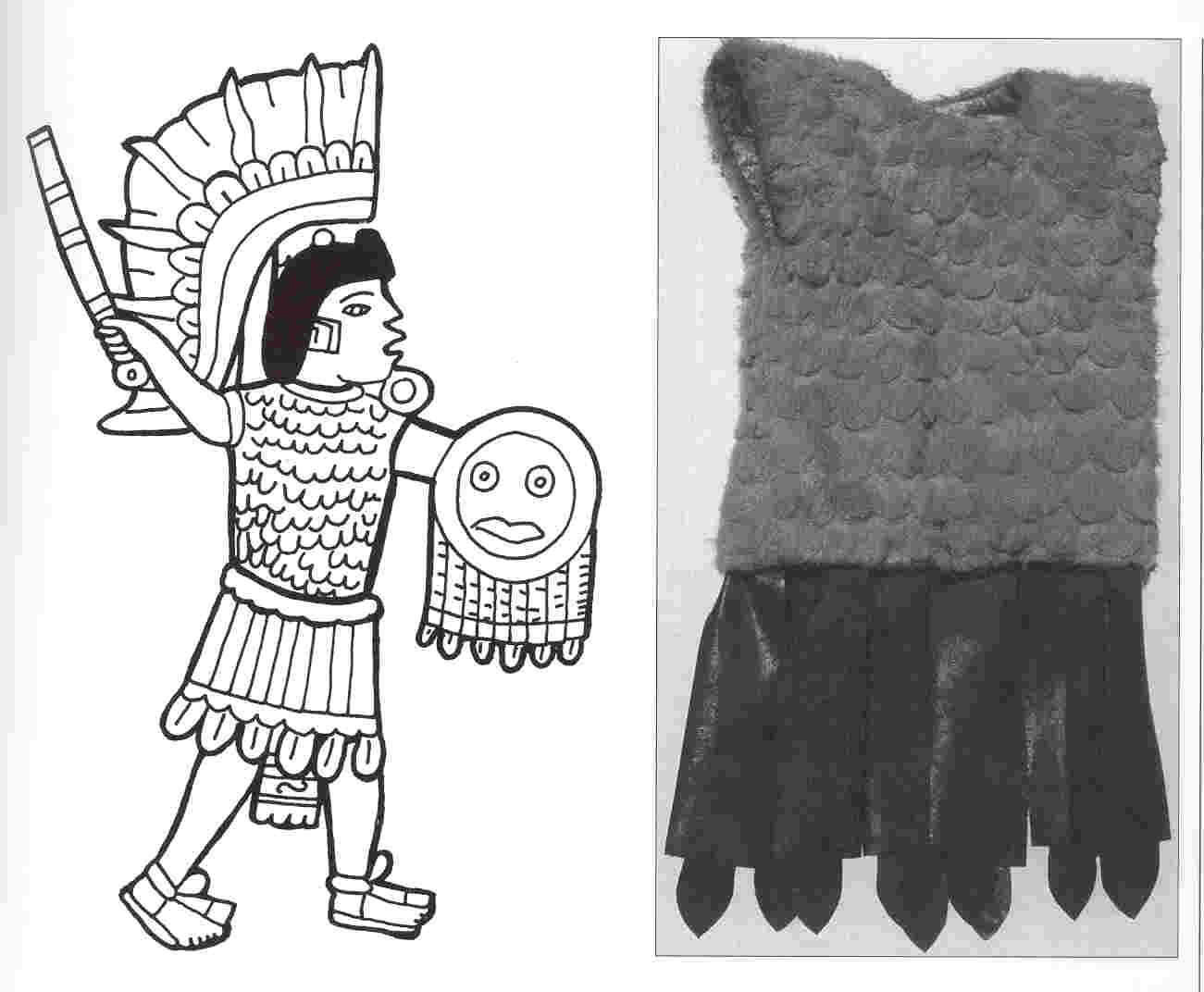
The ichcahuipilli was the Aztecs’ upper body armor made of unspun cotton stitched between two cloth layers in diamond patterns. Historians believed that the armor was soaked in saltwater and left to dry, with the salt crystallizing to provide additional protection. The body armor can deter atlatl darts, arrows, and obsidian swords. The layers of cloth and packed cotton were about one inch thick, protecting the wearer from the heavy blows from batons and the cutting slashes of the macuahuitl.
The ichcahuipilli came in different versions. A jacket tied at the back and a sleeveless jacket that tied in front. A sleeveless pullover protected the torso and top of the thighs. A sleeved version covered the arms down to the knees of the wearers. Another was a sleeveless pullover that flared and reached mid-thigh. However, only the most experienced warriors, like the members of the jaguar and eagle teams, wore the ichcahuipilli.
Chimalli
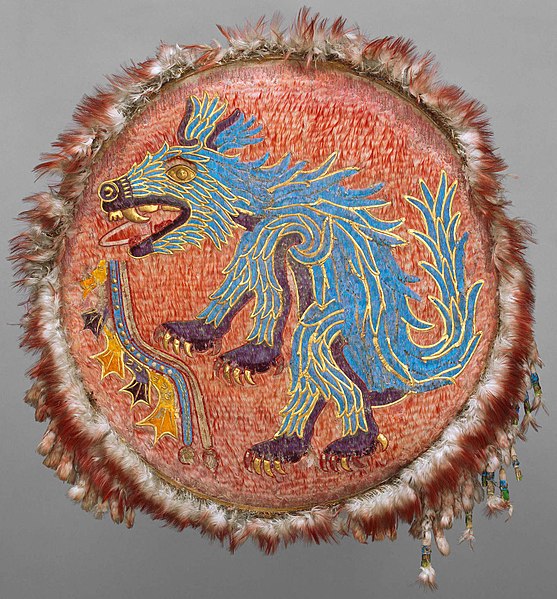
The chimalli was the Aztecs’ shield, and the use of a shield depended on the warrior’s rank. The Aztecs used various materials to make their shields, including feathers, cotton, agave, bamboo, and skins of rabbits, ocelots, and deer. Some chimalli pieces had gold. Bird breeders or amantecas collected the feathers for the shield. They hunted and raised local and migratory birds of different species. The production of the chimalli was a community tradition involving painters, carpenters, bird breeders, and goldsmiths. The feathers were essential, as most shields can have 26,400 feathers.
The shields were of different sizes, some coming in circular designs while others could be folded. Other versions covered the entire body of the warrior. However, some shields, called māhuizzoh chimalli, were only for special ceremonies.
Ehuatl
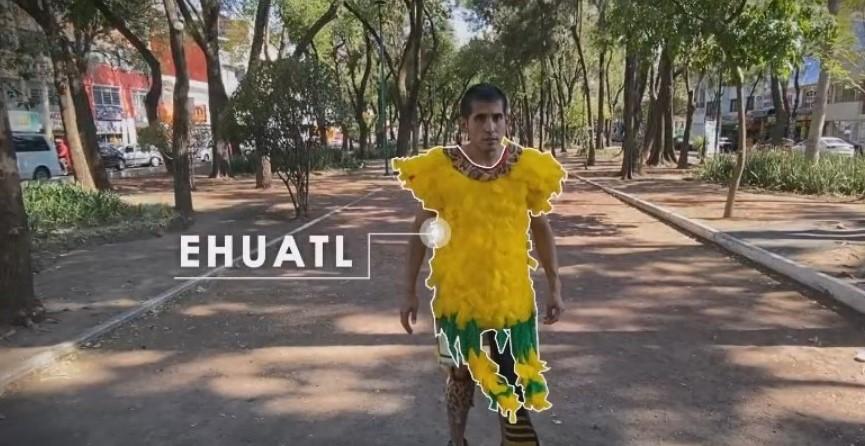
This tunic is created from cloth and covered with feathers set in rows. It also has hanging borders made of feathers. The tunic does not have sleeves or leggings.
It was effective at resisting swords, arrows, and lances. The term means skin, although what the Aztecs wore were made from cloth. The noble warriors, particularly the Jaguar and Eagle soldiers, wore the ehuatl tunic. The tunic was typically covered with yellow, blue, or red feathers.
Cuacalalatli

The Aztecs had different warrior ranks, and only the noble or high-ranking warriors wore helmets or cuacalalatli. Since they did not have access to various metals, their helmets were carved from hardwood. Their helmets were in different shapes, from representations of their deities, coyotes, birds, predatory cats, and howler monkeys. Like the modern helmets, the Aztec helmet protected a warrior’s head down to his jawline. The design featured an animal’s open jaw, through which the warrior could see. The decoration of the cuacalalatli was similar to the warrior’s bodysuit (tlahuiztli).
Pamitl
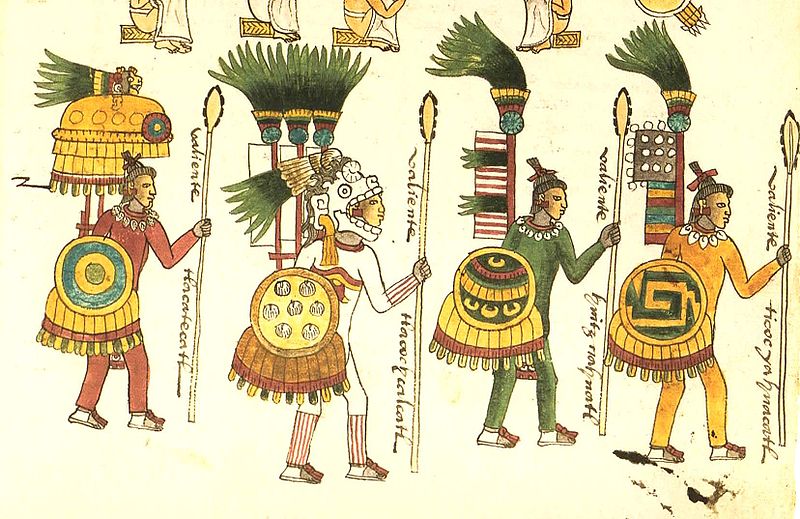
The officers and members of the Aztecs’ high-ranking and famous warrior classes wore different pamitl or identifying emblems. The high-ranking warriors wore the symbol on their backs and the soldiers’ banners or flags. They decorated each symbol in a unique style, decoration, or pattern. The emblems helped identify the warrior from a distance, and the officers used the symbols to coordinate their units’ movements. As the soldiers wore the pamitl on their backs, historians surmise that the Aztecs made their pole or cane from a lightweight material.